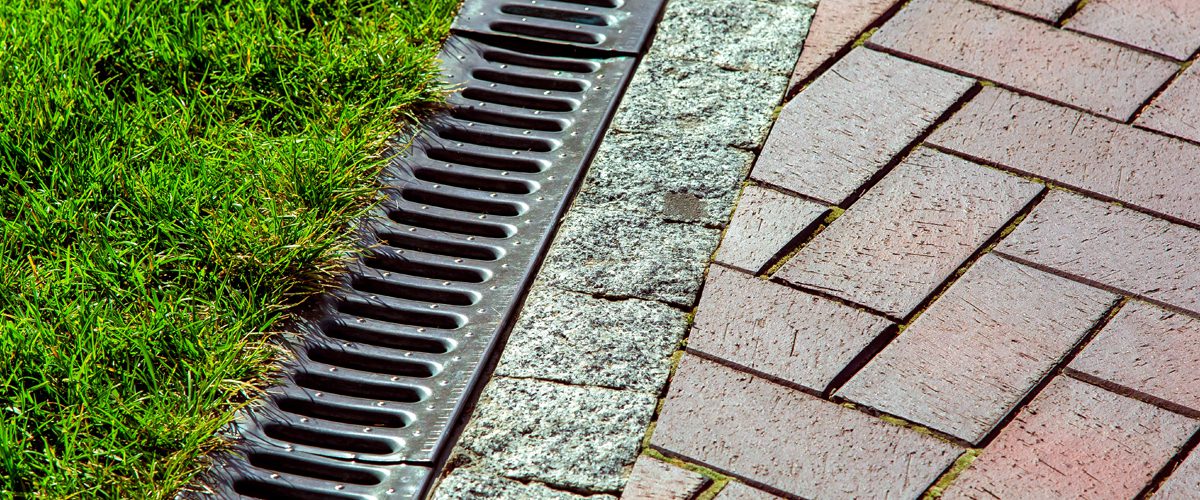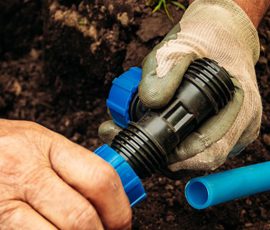
Watering your lawn is crucial if you want it to stay healthy and fresh, but it’s important to ensure your yard isn’t becoming soggy. If you start to notice puddles around your lawn, then you should see what you can do to fix them before it starts to destroy the grass. If you are noticing a bit more water, then you’d like then have a look at this article to see how to avoid a soggy lawn with these eight expert irrigation tips.
Use the Right System for the Area
Puddling can occur when you are giving your lawn too much water through the irrigation system. This can happen for many different reasons, and one of them might be due to the way your yard is situated. If you find that the areas that are puddling happen to be in shaded zones or in one chunk of your yard, then you might need to adjust it to work with the sun.
There are areas of your yard where the lawn might not get any sun which means the water from the irrigation system isn’t being evaporated like the rest. To avoid this, you should either alter your irrigation system to allow you to control the shaded area separately or consider removing it from the shaded area completely. You can water this area as needed, but it likely won’t require extra help from an irrigation system.
Check the Soil
If you notice that the puddling is occurring in areas of your yard that are pretty high-traffic areas, then you might need to look into aeration. When lawns get beaten down and muddy, they create thatch which makes it difficult for water to absorb down to the roots. Aerating the yard is the best way to make sure those areas can properly drain themselves, which means you are much less likely to have wet spots.
Aerating your lawn is easy to do, but it will likely require renting or purchasing an aerator to help you out. The water needs to go somewhere, and giving it an excellent route to the roots is a great way to keep your lawn healthy, and it’s one of the best ways to fix a soggy lawn. Using a deep aeration technique like core aeration is the best way to really break through that tough layer of hardened grass without harming the roots of your lawn.
Add some Fertilizer
Puddles might actually be forming because the soil is unable to handle an average amount of water. If the soil is in poor condition, you will need to add some good fertilizer that is mixed with something like sand which will make your soil a bit looser. It will also allow the earth to get some much-needed nutrients that have likely been washed away with the water.
The best time to add the fertilizer is right after you have aerated your lawn. This way, the water will carry it right to the roots, so you won’t have to worry about any waste. You will also be attracting earthworms to the area, which can help improve the condition of the soil quite a bit. When they wiggle around and make their trails, they create gaps in the soil which makes it much easier for it to go back to absorbing water.
Figure out a Drain System
Standing water in your yard can breed many different bugs, and it will also create mold on your lawn which can be devastating if it spreads. If you have tried to fix the puddles on your property and none of the steps are helping, then you should really consider figuring out a way to drain or divert it elsewhere. This is one of the best soggy lawn solutions for a standard lawn.
If your yard is in a higher area, then consider using an underground drain to divert the water to an area of the yard that is typically dry. These drains are often called French drains, and they are usually found at hardware stores. If your yard is in a low-lying area, you might not be able to use a drain system, but there are other options out there that still might help you out.

Run with It
If you find that you can’t fix the issue, then it’s a good idea to just go with it and make it part of your yard. There are a few different ways you can do this that will make the area look appealing and cute instead of swampy. Look for plants that grow well in bogs to create a “rain garden” by creating a border around the damp area with some stones. This will keep people out of the area while making it look like it’s there for decoration.
You can also look at using rocks to direct the water away from our lawn. This involves creating a drainage ditch and lining it with rocks and mulch so that the water is absorbed while being redirected away from the yard. These are often called “dry creek beds,” and they are a great option for those who have worried about how to fix a soggy lawn.
Check your Downspout Drainage
If you can’t figure out where the excess water is coming from, it’s a good idea to check and see if any drain spouts are pointed toward the area. The excess water from rainfalls might be flooding your yard without you even noticing. Go look at the drainage during heavy rainfall so you can get a good idea of where the water has been going.
A simple fix for this is just redirecting the spouts by using extra materials and adding them to the end. This way, you can point the water in a direction that is completely away from your yard, so you won’t have to worry about it anymore. If you don’t want to use extra piping, consider building a drainage trench under the spout to help the runoff absorb into the ground much easier.
Check Underground
If you have an underground irrigation system that has a leak, then that might cause the water to appear on the surface. One of the best ways to test this is by running your irrigation line and seeing if any areas have low pressure or none at all. If you don’t have an irrigation system, then you still might want to look underneath the areas that are being affected.
You might also have a larger pipe like the main water line that could be leaking, and this could be very dangerous. If you find that the water is constantly reappearing or if you see it actively coming up to the surface, then you should think about getting in a professional to start digging around for the issue. Many areas require you to call a service or hotline before you start doing any major digging on your property, so if you choose to do the digging yourself, make sure you follow all of the local guidelines to ensure you’re digging in a safe spot.
Create a Barrier
Suppose your lawn is located in a low-lying area that is collecting water from all of the nearby yards. In that case, you can do your best to create a barrier to prevent the water from coming in. Use decorative stones or rocks to make a wall to prevent the water from going to places you don’t want it to go.
Creating a decorative barrier is the best way to keep overflow from other yards from seeping into yours, and it’s the easiest way to prevent pooling. Use an interlocking stone to ensure your wall won’t end up leaking and the rocks are high enough to keep the water at bay. You might also want to look into getting it done by a professional mason if you prefer the stones to be sealed together correctly.
Get your Lawn Regraded
If your water problem is due to a slanted yard, then you might need to think about having it regraded so that it has an even surface. This is the only soggy lawn solution for uneven yards, and it is a good idea to contact a professional before you attempt it yourself. A professional landscaper will know the right tools and equipment they need to have your yarn in perfect and level conditions.
They will likely need to survey your lawn to see how much extra height it needs, and they will also figure out the best way to add some proper drainage. After they figure out the adjustments they need to make, they will likely need to transfer the soil in the high areas to the low spots, and you will probably have to reseed the lawn to get it back into shape. Regrading your property may seem extreme, but water damage can cause a large number of issues for your yard.
A soggy lawn can mean disaster down the road, so it’s a good idea to fix the problem as soon as you see an issue. Figuring out the root cause and addressing the issue quickly is the best way to make sure you keep everything healthy. Use these great tips to get rid of that soggy lawn so you can go back to enjoying your yard again.



